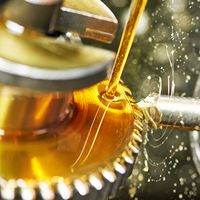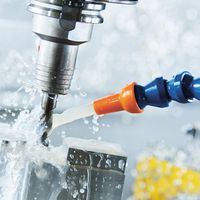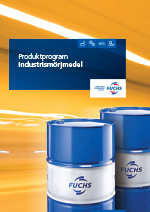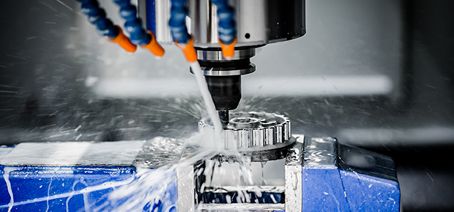Filling of cutting fluids
Filling the chosen cutting fluid
Once you have chosen a cutting fluid it is easy to fill a machine with the new product if the machine is new, but if it is not new and another cutting fluid is already in it, there are various options available.
Changing cutting oils

If there is cutting oil in the system and it is in good condition, the new cutting oil can be dilution-fed into the old one. Before adding the new cutting oil, a miscibility test between the new product and the old one should be carried out in the laboratory, to make sure there are no foaming problems or precipitation when the two are mixed.
The mixing proportions between the products to be tested should be 10/90, 50/50 and 90/10. This simulates the beginning of the dilution when there is 10% new product and 90% old product in the system, 50% of each in the middle of the changing process and 90% of the new and 10% of the old once the fluid change is almost complete. If problems do arise, this generally happens at the 10/90 or 90/10 stage. If the lab test results are good, changing the oil normally proceeds quite smoothly.
Changing water-miscible cutting fluids (emulsions)

1. Changing the whole system
If you are changing the entire cutting fluid system, it is always best to begin with a system cleaner before emptying the system (see the page on Handling and maintenance).
Then remove the couplings and pressure-wash the pipes, along with mechanical cleaning of nooks and crannies. If you don’t clean the pipes and tank properly, there is a high risk of dirt and cutting fluid residue getting into the new fluid during filling – especially if the new fluid washes better, which can result in clogged filters and possibly overflowing.
Any problems tend to subside after the system has been running a while. There is a greater risk of foaming initially when the entire system is changed and started up with a new product in soft water.
2. Part-draining the system
In this process, a certain amount of the old fluid is removed and replaced with the new one, after which the new fluid is dilution-fed into the system.
There is a risk that some of the old deposits could come loose, but it is far less than with option 1 if you have not also cleaned all the tanks and pipes properly.
3. Dilution-feeding the new product
Dilution-feeding may gradually increase the cleaning properties, and the filters will have no problem dealing with a bit of dirt coming loose slowly compared to a complete fluid change. With this option there is a gentler transition to the new product, with fewer operational disruptions. It is important to check the miscibility.
Downloads

Handbook
Collected Knowledge on Cutting Fluids for Metalworking

Product program
Our complete product program for industrial applications (in Swedish).
